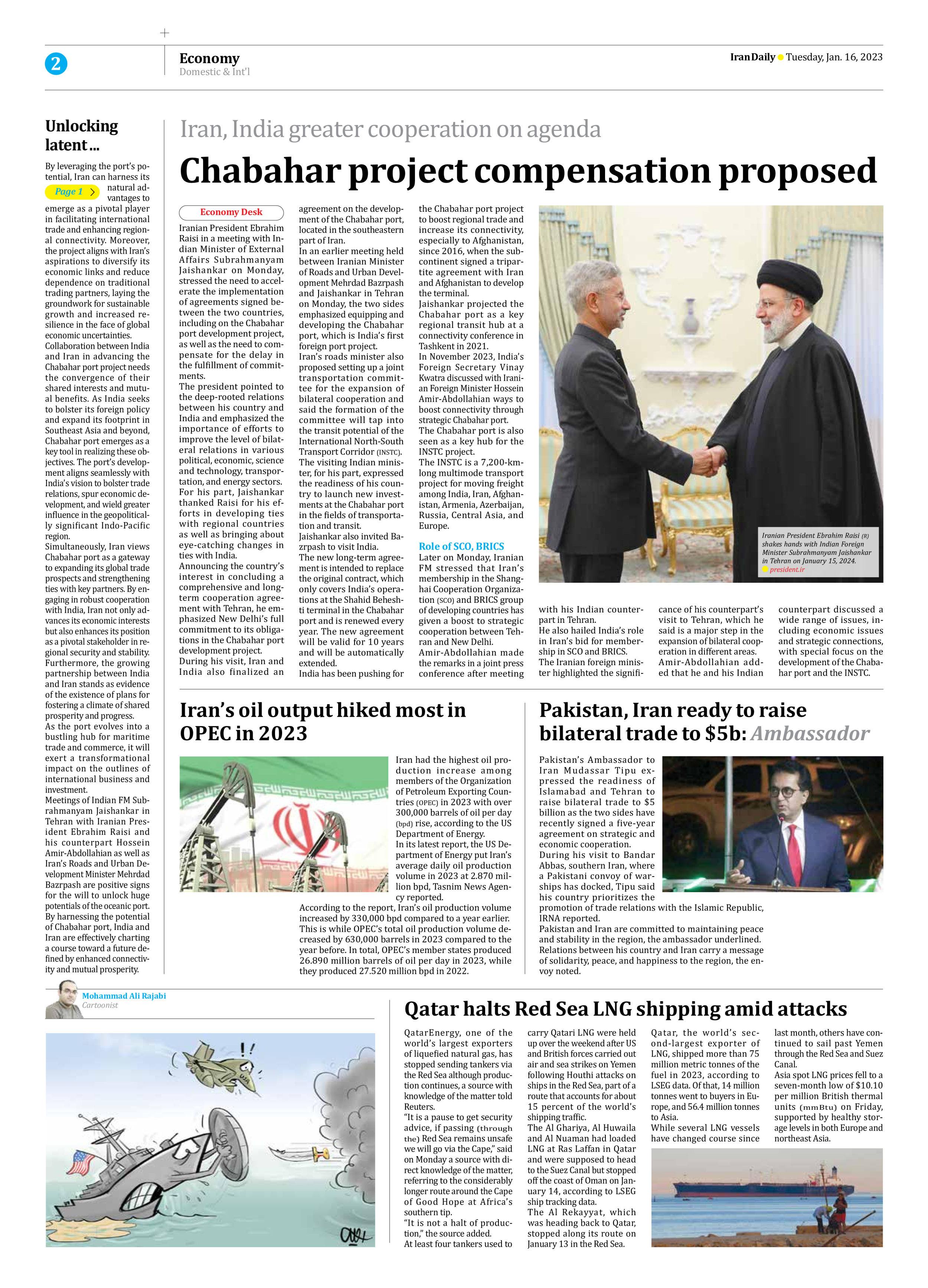
Qatar halts Red Sea LNG shipping amid attacks
QatarEnergy, one of the world’s largest exporters of liquefied natural gas, has stopped sending tankers via the Red Sea although production continues, a source with knowledge of the matter told Reuters.
“It is a pause to get security advice, if passing (through the) Red Sea remains unsafe we will go via the Cape,” said on Monday a source with direct knowledge of the matter, referring to the considerably longer route around the Cape of Good Hope at Africa’s southern tip.
“It is not a halt of production,” the source added.
At least four tankers used to carry Qatari LNG were held up over the weekend after US and British forces carried out air and sea strikes on Yemen following Houthi attacks on ships in the Red Sea, part of a route that accounts for about 15 percent of the world’s shipping traffic.
The Al Ghariya, Al Huwaila and Al Nuaman had loaded LNG at Ras Laffan in Qatar and were supposed to head to the Suez Canal but stopped off the coast of Oman on January 14, according to LSEG ship tracking data.
The Al Rekayyat, which was heading back to Qatar, stopped along its route on January 13 in the Red Sea.
Qatar, the world’s second-largest exporter of LNG, shipped more than 75 million metric tonnes of the fuel in 2023, according to LSEG data. Of that, 14 million tonnes went to buyers in Europe, and 56.4 million tonnes to Asia.
While several LNG vessels have changed course since last month, others have continued to sail past Yemen through the Red Sea and Suez Canal.
Asia spot LNG prices fell to a seven-month low of $10.10 per million British thermal units (mmBtu) on Friday, supported by healthy storage levels in both Europe and northeast Asia.







